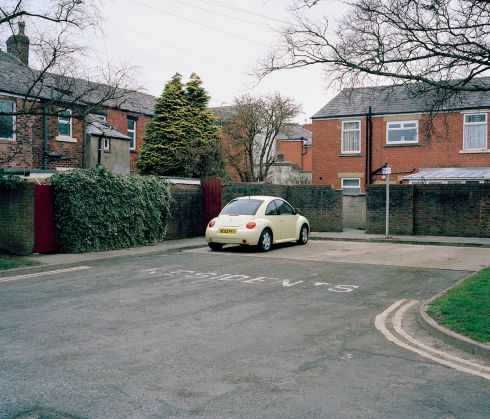
Cunliffe Street, Chorley
–
THE DARK FIGURE
The abuse might be going on in your town. Victims may be under coercion in your neighbourhood. Slaves and masters may be on your street. If that sounds far-fetched take a look at Amy Romer‘s project The Dark Figure* and you’ll learn that modern day slavery is diffuse throughout Britain. In recent years, cases of contemporary slavery, forced work and forced prostitution have been detected and prosecuted in villages, towns and cities in every region of the UK.
While modern day slavery is more prevalent in developing nations, it persists in (what we in the West prefer to call) advanced democratic nations. In December 2015, the UK Home Office estimated that there were 13,000 victims of slavery in Britain. The government referred to the 13,000 as “the dark figure” from which Romer’s documentary project derives its name.
Romer has travelled the UK photographing the streets that her research has uncovered as sites of slavery. I encourage you to learn more about the cases the project covers here:The Dark Figure*.
Romer wants “people to be reminded of somewhere they have lived or visited; somewhere they feel safe.” Do these places look familiar? For me these places look very familiar. I spent my formative years drinking at a pub at the bottom of Cunliffe Street, Chorley (pictured above). In recent weeks, I’ve travelled through Burnley, Batley and Blackburn. During the project, Romer discovered that two traffickers facing prosecution in Plymouth lived one street over from her.
The Dark Figure* is not an easy project to face. It is insistent on revealing the nastiness in our midst. It holds considerable visual dissonance for British audiences particularly. The act of documenting is, for Romer, a form of witness. I wonder to what degree this work propels us to learn more about the hidden issue? I wonder if any victims of contemporary slavery would ever see it? There’s a lot to unpack here, so I was happy Romer was willing to answer a few of my questions. Scroll on for our Q&A.
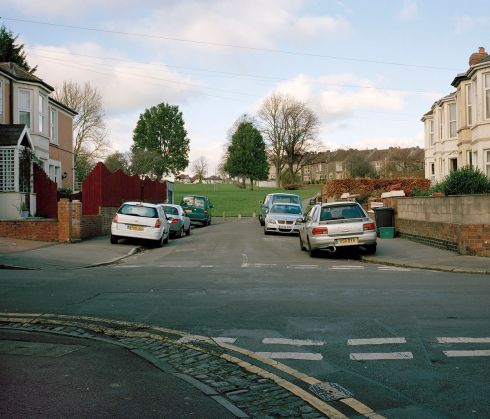
Ash Road, Horfield, Bristol
–
Q & A
I expect there are so many sites of imprisonment, slavery and abuse. How do you choose which to photograph?
Sadly, where I photograph is largely determined by and limited to which stories make the headlines. The 2015 Modern Slavery Act has made prosecutions of modern slavery and human trafficking easier to conduct and so we are starting to see an increase in cases and subsequent media attention. However, due to the sensitivity of the such cases, police give very limited information to press for the protection of both victims and suspects. So I’m having to initially search for the stories through the press and then do some digging of my own via the police, The White Pages and Google.
The problem is that many cases will never be known to the press, to me or to the public generally. First of all, it’s a hidden crime so uncovering it in the first place is a significant challenge, which takes a huge amount of police resources and social care. Secondly, victims are often scared of authority and have absolutely no trust to give. They’ve been mentally and/or physically controlled and threatened and are entirely dependent upon their ”employer” or “gang-master”, so even when victims are recovered it is likely they will run away from police or from care, and in a lot of cases, will return to their gang-master or get picked up by another. And we’ll never hear about it.
Putting aside the disturbing limitations, I knew early on that the project would only become effective once I was able to present an abundance of cases, becoming a kind of bleak directory of U.K. modern slavery cases. So as long as I’ve been able to piece together solid and reliable facts and have been able to get to the locations, I haven’t been too fussy about which stories I pick. It’s been more important that I capture the diversity of the problems that exist in the U.K., and to try to communicate that sense of abundance.

SOAS, Russell Square, London
Batley Field Hill, Batley, Kirklees
Bamfurlong Lane, Staverton, Cheltenham
–
What are the strengths and shortcomings of the image (as a medium) in the face of this issue?
The image of modern slavery is in most cases a troubling one. It’s hidden nature makes its reality very difficult to photograph. Instead, we tend to find images made to represent slavery, using actors or “symbols” of slavery such as hands tied with rope or a person trapped behind bars, which are not only inaccurate but are damaging to the understanding of the issue.
We may be exposed to photo stories of sex trafficking or labour exploitation in other countries, but we need to show people its right here in the UK with real pictures of real stories.
How do you describe the photographs?
There is nothing notable I can say about these images on their own. Perhaps that they are deliberately quiet. It is only when coupled with their stories that the pictures become something sinister, at which point the viewer can reconsider the world they thought was safe and familiar to them.
My ultimate goal is to spur a realisation in the audience that such crimes are likely to be happening much closer to home than they imagine.
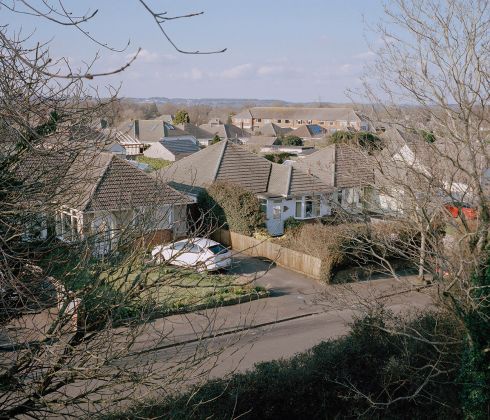
Ringwood Road, Bournemouth
–
You explained in the Multimedia Week podcast that when you first approached people you had the idea, the will, but not something tangible to show; no images to share. Then you went out and just started making photographs to demonstrate your commitment and skill. Can you explain how and why that order of events helped or hindered the project.
There’s no right or wrong order of doing anything. But in my case, it had to happen in that order for me to understand the reality of the work I was proposing, and to then move forward with alternative ideas. But you never know with these things until you try. All it takes is speaking to the right person and you don’t know who that person is. (I still don’t!).
I was very lucky at the beginning and experienced a great deal of openness from Devon and Cornwall Police, which possibly led me to believe others would be just as forthcoming, but I came to realise this wouldn’t be the case, which I think is fair enough. Why trust me? The problem is, I’m still battling with the access I want – but this is all part of the job.
What I will say though, is that when I started making photographs I felt a huge sense of relief. Even for someone who relishes in research, I very much reached a point where I just needed to pick up a camera and go shoot.
This style of photography was very different than what I’m used to so it was a very interesting process for me and one which allowed me to continue research from a more positive perspective, as I started shaping my ideas and understanding of the subject through pictures.
Brougham Street, Burnley
Wentloog Avenue, Peterstone, South Wales
Farrier Road, Perivale, Ealing
–
Have you spoken to survivors of modern slavery?
I have. I had one guy reach out to me via Facebook having seen my project. We’re in conversation about working together long distance.
Previous to this, I had been trying to reaching out to NGOs for access to survivors, but had found that even after I had received a “yes” from a number of them, and months worth of email and phone communication, access would eventually be denied for the protection of the survivor(s). Of course, this is understandable and I would refuse to knowingly harm or prolong the process of recovery for any survivor, but I’m not always convinced the refusal has been a decision that has involved the survivor. I think NGOs sometimes struggle to appreciate the impact of a story told first-hand, compared with stories told by actors or through written case studies, which is what readers will usually experience. I’m not sure it’s enough to really reach people.
How do you assess public opinion in Britain on the issue of modern slavery?
“Modern slavery? What’s that!?”
The problem doesn’t just end with the lack of public awareness of modern slavery itself, but deepens with dangerous misunderstandings about the differences between terms such as “sex exploitation” and “sex work”, or “human trafficking” and “smuggling”, for example. These misunderstandings are only intensified when Europe finds itself at the centre of a migrant crisis, tangled with terms such as these that are freely distributed across the mass media.
Hathway Walk, Easton, Bristol
North Street, Bedminster, Bristol
Peckford Place, Brixton, London
–
Are the police doing good work?
There is a lack of consistency throughout the country. I have been largely based in Devon and Cornwall, where their Chief Constable Shaun Sawyer, is the UK policing lead for modern slavery, making the South-West surprisingly ahead of the game … for a game that is very far behind.
The 2015 Modern Slavery Act has certainly helped raise public consciousness and agencies are beginning to make good use of the Act. More victims are being identified than ever before. In 2015, 3,266 potential victims were identified and referred for support, a 40% increase on the previous year. There have been an increased number of proactive and reactive police investigations with an increased number of prosecutions and convictions.
But despite stand-out examples of good practice, there is still a lack of consistency in how law enforcement and criminal justice agencies deal with modern slavery. Training for police officers, investigators and prosecutors is patchy and sometimes completely absent. There is also an insufficient amount of intelligence about the nature and scale of modern slavery at regional, national and international level, which hampers the operational response and ability to build knowledge and learn from mistakes.

Union Street, Plymouth
–
Which organisations are doing work to advocate and illuminate the issue?
There are many organisations both big and small. It’s difficult to pick on individuals as I’ve become biased towards or against my own experiences, which doesn’t necessarily reflect the organisation as a whole.
I find it hard to truly know how impactful NGOS are. They seem to all be chasing money from the same pot and in some cases are actively working against each other for their own benefit.
But, to shine a positive light on something I know for sure: several NGOs act as “first responders” under the National Referral Mechanism (NRM), the government framework which grants 45-days of “reflection and recovery” for victims of human trafficking and modern slavery. In this inexcusably short period of time, victims are expected to give evidence of the horrors they have experienced to feared authorities so that “trained decision makers” can announce whether they are to be considered victims of trafficking. During this period, first responders provide housing and support for victims; so if by some miracle a victim feels compelled to recount their experiences to the police, it is surely all thanks to the outreach specialists supporting them.
On a less positive note: this 45-day period given by the government’s NRM, reflects the lack of understanding surrounding the issue. Even if an organisation has been made fully aware what their client has been through, if they do not wish to testify within 45-days, they are not considered victims and their support cannot continue. What will happen to the victim after 45-days? If they are not deported back to the country they were likely escaping from, they will probably end up back within the trafficking system. This is very challenging for support workers and NGOs and I salute all their efforts.
Spa Road, Bolton
Ford Park Road, Mutley, Plymouth
–
You’ve already made a newspaper. What else lies in store?
I think something I’ve had to learn the hard way is that it’s all very well making things for a project, but unless anyone sees it, what’s the point?
The reason I made the newspaper is because it would be cheaper to produce and easy to share with the community. People sometimes tell me it would look great in a book. Fine, but who is actually going to buy it other than photographers? In fact, who is going to fund it should be my first question, but it is not my first concern.
My focus for now and for the near future (at least) is to raise awareness. The work needs to be published, and the newspaper needs funding to be printed and shared in the community. It’s a slow game but I’m working on it.
How long do you intend to work on The Dark Figure*?
I’ve slowed the project for the moment as I’m currently in a state of transition, having recently moved to Vancouver, Canada with my partner for his work in science.
Saying that, I’ve had a few fresh ideas for The Dark Figure* since being over here, which I plan to follow up remotely. But naturally, I want to focus my attention towards Canada specific projects whilst I’m here for a few years.
There’s so much more work to be done and that’s partly why I felt comfortable placing The Dark Figure* to one side, as I have no doubt I’ll be exploring new avenues for it in the future.
Longworth Street, Preston
Portugal Street, Holborn, London
Wheelers Lane, Linton, Maidstone, Kent
–
What has been the reaction to The Dark Figure* so far?
From the people I’ve reached out to, the reaction has been very good. There have been flurries of people contacting me to buy the zine or the newspaper, mostly from the UK but also Europe, which is great.
There has been some valid criticism from news based editors explaining why they would find it difficult to publish, which I’m working on overcoming. My writing needs to be fact-checked in order to be publishable.
Also, outlets need to know I haven’t trespassed. I have never trespassed–there is no need. The Dark Figure* captures the surrounding neighbourhoods, not the actual property in question, and I’m always on the street.
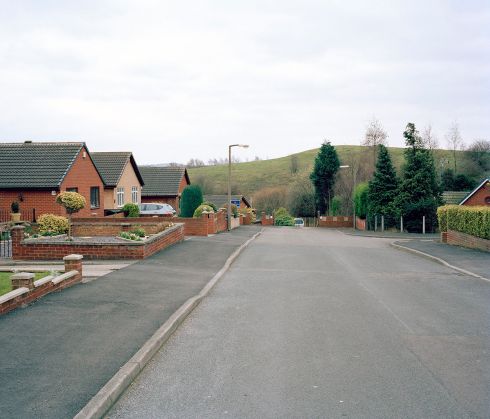
Walker Street, Rawmarsh, Rotherham
–
Do you ever get overwhelmed? Depressed? Are you hopeful? Talk us through your self-care strategies.
I am cynical and can be full of doubt, all the time. But for me, these stories are about human survival, and despite being totally fascinated by it all, it’s what gives me hope and drives my work forward.
Tragedies exist everywhere, and I don’t think that’s a difficult idea to grasp. But what is difficult, is to believe that such tragedies are happening right in front of us. And I don’t just mean modern slavery. Domestic abuse, addiction, mental health issues and so on, are all issues that can largely exist behind closed doors. By attempting to shine a light onto a truth that otherwise may not be acknowledged, I am doing something useful and positive. It’s a self-care strategy in itself.
Saying that, the news can sometimes overwhelm me when I’m thinking specifically about this work. The migrant crisis. Immigration. I wonder whether the government’s efforts to “face up to modern day slavery” is just another way of deporting the unwanted. Europe is becoming more and more tangled with problems and I wonder what effect it will have on human trafficking, for example. 10,000 refugee children are missing. Where have they gone? Something tells my cynical mind, like all hidden tragedies, we won’t find out the easy way.
A sombre note on which to end. Thank you for sharing your work and thoughts, Amy.
Thank you, Pete.
–
Be sure to follow The Dark Figure* project on dedicated Twitter and Instagram feeds. Follow Amy Romer on Instagram and Twitter.

Smart Street, Longsight, Manchester
–

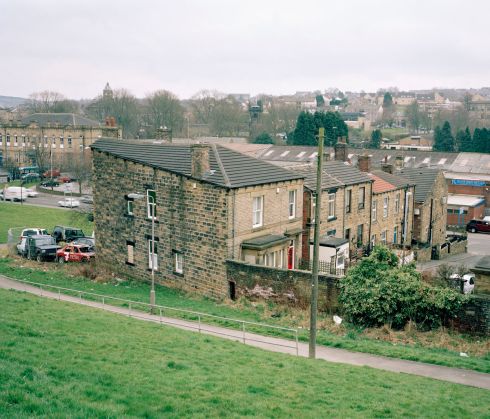
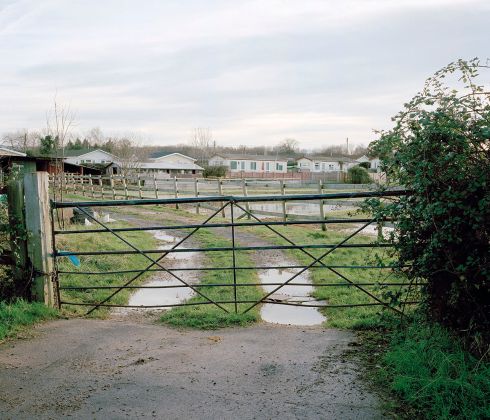
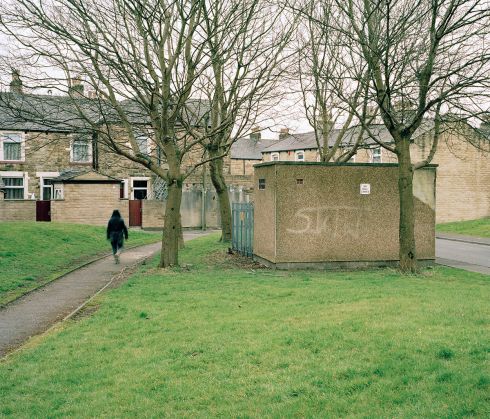
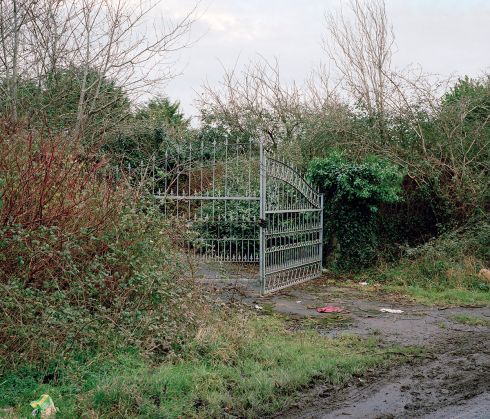
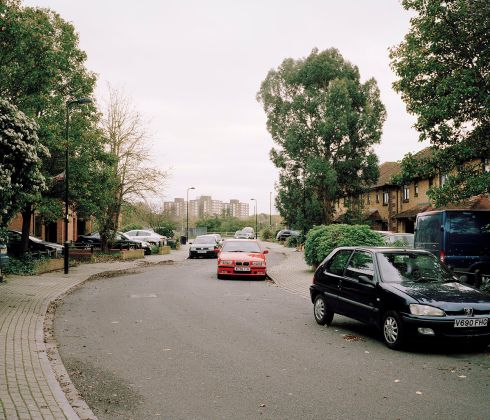
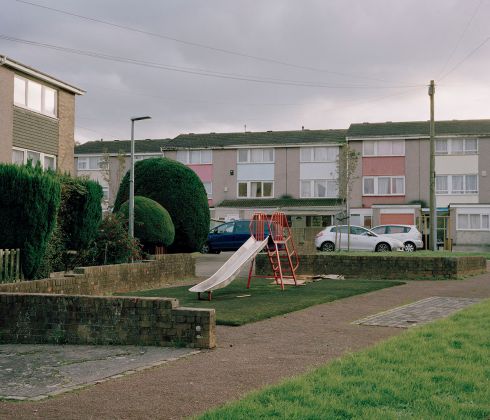
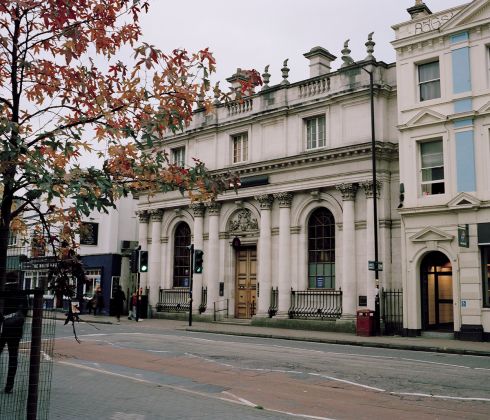


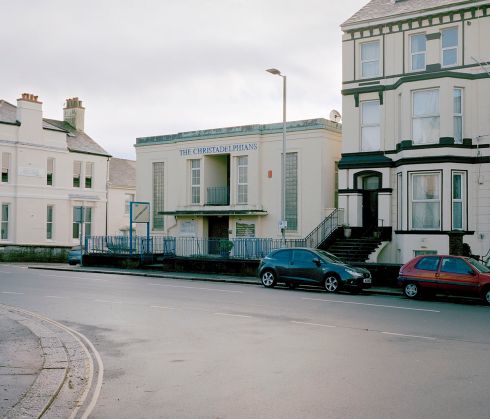


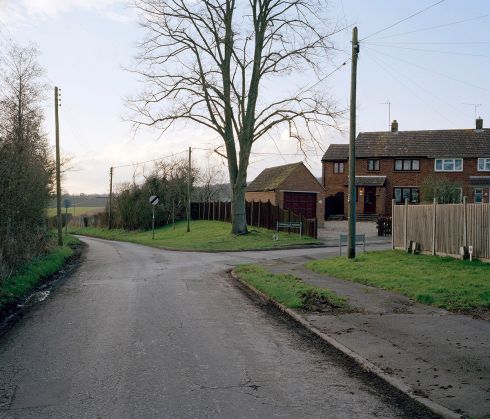
1 comment
Comments feed for this article
February 15, 2017 at 6:46 am
janetisserlis
Thank you for this. As I was reading, I was reminded of the horrors committed against Native women in and around Vancouver; guessing you have as well. grateful for this work